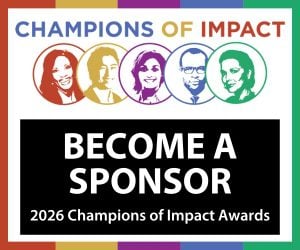Gina Fears was caught up in the crack epidemic of the 1980s and ‘90s, when crack cocaine poured into major U.S. cities. Following stints with alcohol and marijuana, starting in her teens, she moved on to snorting cocaine and, when she built up a tolerance to that, went to smoking crack cocaine.
Fears said the time blurred together so much she can’t recall when one substance turned into another. She doesn’t remember the first time she went to rehab either, but the last time she went was August 1996. This summer, at 59 years old, Fears will be 23 years clean.
Fears is now assistant director of recovery and community services at Public Advocates in Community re-Entry (PACE), a nonprofit that helps those affected by incarceration become self-sufficient and build stronger communities. The opioid crisis has been taking up more of Fears’ time at PACE recently, as she helps Indianapolis overcome its latest health crisis.
But as many have noted, the response to the opioid crisis is different than it was to the crack epidemic. For starters, Fears said, crack wasn’t called an epidemic at the time. Now, there were references to a “crack epidemic” in The New York Times and Los Angeles Times in 1986, and the Baltimore Sun in 1990, but the sentiment remains, that it wasn’t seen as an emergency in the same way today’s opioid crisis is.
The government responded to crack by ramping up its so-called war on drugs, which began under former President Richard Nixon in 1971. The most infamous of these measures was the Anti-Drug Abuse Act of 1986, signed into law by former President Ronald Regan, which implemented a 100-to-one minimum sentencing ratio between crack cocaine and powder cocaine. The minimum sentence for possession of crack, largely associated with African-Americans, was five years.
There is still a punitive approach to the opioid crisis, but there is also more attention being given to mental health, poverty and the nature of addiction. Fears said this “begs the discussion that we have to have in this country. What is the worth of every individual? This is a life-or-death issue, but how we’ve addressed it has shown itself to have a very great difference.”
In Indiana today, a person involved in the sale of a syringe commits a Class A infraction, which means zero to 365 days in jail and a maximum fine of $5,000. It becomes a Level 6 felony — where the advisory sentence is one year with a maximum fine of $10,000 — for repeat offenders. Unlawful possession of a syringe is a Level 6 felony.
“We are criminalizing the hell out of this problem,” said Brad Ray, the director of the Center for Health and Justice Research at the Indiana University Public Policy Institute.
Ray said it seems like people have to get caught up in the criminal justice system to get treatment. Indianapolis Metropolitan Police Department has partnerships with other community organizations that connect non-fatal overdose victims with social services, and Ray evaluates those programs. The Marion County Sheriff’s Office manages county jails and has special units and programs for people addicted to drugs.
Some of the criminalization elements that existed, or even came into existence, during the 1980s and ‘90s are still used today. For example, the federal government began distributing aid in 1988 to state and local law enforcement agencies willing to wage the war on drugs, and former President Barack Obama included increased funding for that aid program in his Economic Recovery Act of 2009. Obama also signed into law the Fair Sentencing Act of 2010, which in part reduced the cocaine sentencing disparity to 18-to-one and eliminated the five-year minimum mandatory sentence.
When it comes to the public perception of these two health crises, Jody Sundt, a professor at the School of Public and Environmental Affairs at IUPUI, said it’s difficult to tell where the initial nudge to undo some wrongs and slightly loosen the grip of the criminal justice system comes from.
“Public mood does tend to drive what politicians and the criminal justice system does,” said Sundt, whose research focuses on correctional policy, “but there could also be a feedback loop so the more the government responds with new laws or enforcement initiatives, that can also heighten attention.”
There’s also the fact that the opioid crisis began as an issue of overprescribing, which gave it a medical lens the crack epidemic never had. To compound that, the beginning of the opioid crisis affected mostly white and rural areas, which many saw as a motivating factor in garnering support for a more sympathetic approach to the problem, where people talk more openly about mental health and what it means to be addicted to something.
Sundt also noted people are responding to the opioid crisis in a different context than the crack epidemic. There was more enthusiasm for a war on drugs in the 1980s and ‘90s, even if it was partially manufactured by a national media blitz that led to 64% of respondents to New York Times and CBS News poll in the late ‘80s to say drugs were the most significant problem in the country, the highest percentage ever recorded. In March 2019, a Gallup poll found 2% of Americans thought drugs were the biggest problem facing the country.
Contact staff writer Tyler Fenwick at 317-762-7853. Follow him on Twitter @Ty_Fenwick.





